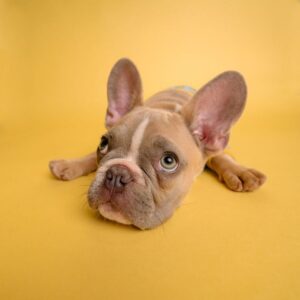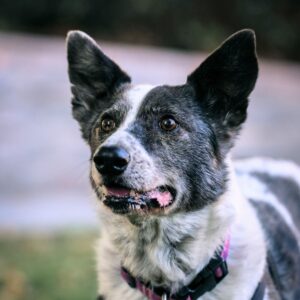Top 10 Family Friendly Dog Breeds
This article looks at the top 10 family friendly dog breeds based on size, temperament, energy levels and care requirements.
Dogs are a fantastic addition to any family. Not only do they make wonderful companions, but they also help children develop socially and learn responsibility. But how do you decide what breed is the right fit for your family? It is important to take a look at your family unit and lifestyle before you decide what breed of dog is the right fit for you.
You first want to look at your family and decide what factors will affect the breed you choose in a pet companion. How old are your children, How large is your indoor/outdoor living space, How active are you as a family? Once you look at these factors you can start to narrow down the breeds of pup that are right for your family.
There are four main things you want to consider when you are ready to look for a furry friend:
- Size: The size of a dog does not necessarily correspond to how well they will behave around children. Some large breeds are complete teddy bears while some smaller breeds can be aggressive toward small children. Size should be considered in relation to energy and temperament. For example a large, rambunctious dog may inadvertently knock over small children, or a smaller laid back breed could be easily frightened by curious toddlers.
- Temperament: This is all about the personality of the pooch. Dogs all have their own unique personality and it is important to find the one that best matches your family. Playful breeds are better suited to families that have kids that are old enough to run around and toss the ball whereas calmer dogs will be more patient with young children.
- Energy levels: Some dogs were born for couch cuddles, while others are made for frollicking outdoors for long periods of time. Comparing the energy level of a dog breed to your family’s lifestyle can make all the difference. If you are a family that loves going for hikes and spending time at the cottage then a high energy pup is going to be a better fit than one that prefers lounging around all day.
- Care requirements: Something to consider when adding a furry friend to your family unit is what their potential needs are and if you as a family have time to fulfil them. How much grooming is required? How many walks a day will they need to go on? Who in the family is able to take part in these responsibilities is a factor worth considering before picking out your new pup.
After considering all of these factors it is time to pick what pooch is right for your family. Is it a high energy, rambunctious playmate, or is it the laid back cuddle bug? These are our picks for the top 10 most family friendly dog breeds.
Labrador

Weight: 55-80 lbs
Height: 21-24 inches
Lifespan: 10-12 years
America’s number one dog breed since 1991 according to American Kennel Club , Labrador Retrievers are both a hard-working and good natured dog breed. Best suited for families looking for a medium to large dog, Labrador Retrievers are high energy and require a very active lifestyle.
Labs are short haired dogs which require minimal grooming, however they are likely to shed. While overall a healthy breed, Labradors may be prone to hip dysplasia, elbow dysplasia, and ear infections.
Golden Retriever

Weight: 55-75lbs
Height: 21-24 inches
Lifespan: 10-12 years
Golden Retrievers are highly trainable, intelligent, and active dogs. Best suited for families that can provide time for play, exercise and mental stimulation; Goldens are “pack” dogs and require a lot of attention from their family.
Shedding is a constant when you have a Golden as a pet companion. They shed all year round, and have two deep sheds a year (that means a lot of fur floating around). Weekly brushings can help maintain the amount of shedding that occurs. Similar to other retrievers, they are more likely to experience hip and elbow dysplasia.
Bulldog

Weight: 40-50 lbs
Height: 14-15 inches
Lifespan: 9-10 years
Bulldogs are laid-back, friendly dogs and are a great option for first time pet parents. Short, and stocky; bulldogs require light to moderate exercise, and do well in both larger homes as well as apartment living.
Minimal brushing is needed (once a week on average), however daily cleaning of the face is required with a bulldog. Due to their facial structure, bulldogs are at an increased risk of having sinus and eye issues. They are also less adaptable to extreme weather and are likely to overheat in high temperatures.
Pug

Weight: 14-18 lbs
Height: 10-13 inches
Lifespan: 13-15 years
Great for novice pet parents; pugs are a playful and affectionate breed that is great with children. Always wanting to be the centre of attention, be prepared to spend a lot of time cuddling and socialising with your new pup.
While pugs are short haired and easy to groom, they do shed quite a lot. Weekly brushings can help lower the amount of shedding, but will not remove it all together. Similar to other short snouted breeds, pugs do not manage well in extreme heat and should be watched closely when out in warm weather.
Beagle

Weight: 18-30 lbs
Height: 13-15 inches
Lifespan: 10-15 years
One of the most popular hound breeds; beagles are loving companions making them a great option for families. They are a curious breed that require at least an hour of high energy playtime a day. Bred as a packdog, Beagles will often get into mischief if left alone for any length of time.
Due to having a double coat, which gets denser during winter months you can expect a lot of shedding come springtime when you have a beagle. Weekly brushings with a grooming mitt will remove loose hairs. To prevent ear infections as well as yeast build up it is important to check a beagle’s ears weekly.
Newfoundland

Weight: 100-150 lbs
Height: 26-28 inches
Lifespan: 9-10 years
A gentle giant; Newfoundlands are a sweet, patient, and devoted dog breed. They are especially good with young children. Best suited to families that have large living spaces including wide, open spaces for exercise. Newfoundlands make great walking companions, and enjoy the water.
If you are a neat freak, then this is not the dog breed for you. Newfoundland dogs have a long, and heavy coat which requires weekly brushings to prevent matting. They do shed year round, and are also prone to drooling frequently. Like many large dog breeds, the Newfoundland is more likely to develop hip and elbow dysplasia.
Cavalier King Charles Spaniel

Weight: 13-18 lbs
Height: 12-13 inches
Lifespan: 12-15 years
The largest of the toy breeds, Cavalier King Charles Spaniels are born companions. The Cavalier is eager to meet everybody and is great with children and other animals alike. Part lap dog, part sporting dog the Cavalier requires moderate exercise on the daily and is easily adaptable to apartment living.
Regular brushing and bathing is required to keep the Cavalier coat looking, and feeling silky smooth. Prone to ear infections, it is important to check their ears weekly as well. Generally a healthy breed, Cavaliers are at an increased risk of developing MVD (heart disease) at an early age making regular vet visits important.
Irish Setter

Weight: 60-70 lbs
Height: 25-27 inches
Lifespan: 12-15 years
This friendly and affectionate dog is full of energy. While Irish Setters get along with everyone, their rambunctious nature may be overwhelming for young children. Best suited to homes where children are a little bit older, and there is a lot of room to run and play outside.
These gorgeous redheads require grooming at least twice a week to keep their coats looking shiny, and free from tangles. Irish Setters are prone to getting hip dysplasia, as well as epilepsy (both of which are hereditary).
French Bulldog

Weight: 16-28 lbs
Height: 11-12 inches
Lifespan: 10-12 years
These fantastically family friendly dogs are great with children and are a wonderful option for first time pet parents as well. The playful French Bulldog requires little exercise (daily walks) and does great with apartment living. With their batlike ears, and short snouts, these pups are very affectionate companions to the whole family.
Frenchies shed minimally, and only require one brushing a week. Their facial folds do require regular cleaning as well as thorough drying to prevent bacterial infections. Like all flat faced breeds French Bulldogs are more likely to have breathing problems and do not do well in extreme heat. They may also be at a higher risk of developing allergies.
Mutt

While you may only be looking to add a purebred to your family, don’t dismiss mixed breeds. Oftentimes a mixed breed can add the best traits from multiple dogs all in one. A mutt is sure to be a unique pup, and a great addition to any family.
Aside from being one of a kind, there are so many other benefits that come with adopting a mixed breed from a shelter. You can get insight into their behavioral background, as well as their personality from the shelter workers. You also get the chance to save a life! What’s better than that?
Thinking of buying?
Have you considered pet adoption?
There are hundreds of thousands of dogs looking for there forever home.
Check out our:
Why Shop When You Can Adopt post










